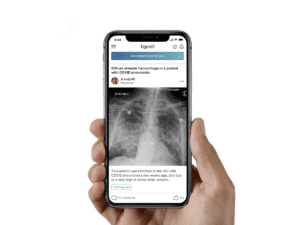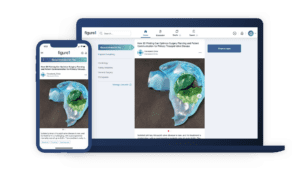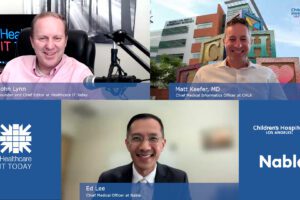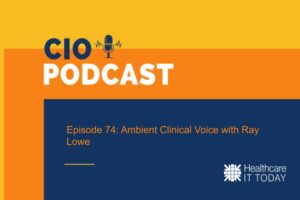Figure 1 has been called the “Instagram for Doctors” and has succeed with clinicians, an audience that Twitter, LinkedIn, Facebook and Instagram have failed to fully engage. What’s the secret to their success? Hint: It’s not badges, gamification or giveaways. Their success is the result of something refreshingly old-school.
Healthcare IT Today recently sat down with Josh Wildstein, CEO at Figure 1 for a conversation about the company. We talked about their evolution into a medical knowledge/education hub and where they are headed next.
What is Figure 1?
 “We are a case-based knowledge sharing platform where Health Care Professionals (HCPs) from all over the world come and share information around medical cases,” explained Wildstein.
“We are a case-based knowledge sharing platform where Health Care Professionals (HCPs) from all over the world come and share information around medical cases,” explained Wildstein.
Here is how it works:
- Users post information and images (EKGs to MRIs to handwritten notes) about a medical case they would like help with or a second opinion on
- The Figure 1 community responds to the post, offering opinions, relevant articles, suggestions and links to similar cases on Figure 1
- The conversation on the case is visible to everyone on the platform and remains there so that it can be referenced by future posts/cases
Figure 1’s community of HCPs is active on the platform and each post/case generates many responses.
What’s Their Secret?
Many of us who are avid users of traditional social media platforms (ie: Twitter) have been trying to get clinicians more actively engaged for years. Although there are clinicians on these platforms, their numbers are relatively few.
How did Figure 1 succeed in getting clinicians and HCPs to engage online with each other?
Wildstein chalks it up to two key factors:
- Security and privacy
- A well-designed product that works for HCPs
Access to the Figure 1 platform is carefully controlled. Only HCPs are allowed to be contributing members. It is not open to the public. Furthermore, the company has a very clear content policy that outlines all the personally identifying information that should be removed from a case before posting it. Moderators remove any posts that violate this policy.
These security and privacy controls were key to overcoming the hesitancy that HCPs feel about posting real-life cases on Figure 1.
The company also purposely designed their platform to look, feel and behave like other popular mobile applications. By focusing on the mobile experience, they made their platform more accessible to their end-users. Instead of having to go back to a workstation, HCPs could take out their mobile devices and get to Figure 1 instantly. This mobile access fit right into their natural workflow and was key to gaining adoption.
Figure 1’s success is a textbook example (excuse the pun) of business fundamentals. They took the time to truly understand the needs and working environment of their end-users. They then created a simple solution that works. They didn’t get caught up in a lot of bells and whistles. It’s refreshingly old-school.
Democratizing Medical Knowledge
“The original concept was to create a social network for doctors,” shared Wildstein. “But it turned out, not surprisingly, that HCPs are very busy and don’t have a lot of time to socialize online. What they did want was to engage and consume quality information.”
 So instead of focusing on just the social and sharing aspects of the platform, the company smartly chose to become a valuable source of educational content.
So instead of focusing on just the social and sharing aspects of the platform, the company smartly chose to become a valuable source of educational content.
“The challenge we set for ourselves is how to give every Healthcare Professional the same access to knowledge and expertise no matter where they practice in the world,” said Wildstein. “Not every HCP has the same level of access that we have here in the US and Canada.”
A family doctor in rural Madagascar, for example, may not have access to a pediatric specialist locally. Through Figure 1, however, that doctor has access to a wealth of pediatric knowledge – some of it accumulated in prior cases on the platform and more of it in the minds of members of the Figure 1 community.
Changing Medical Education?
Wildstein’s comments about being an educational platform prompted me to ask him if the company had any plans to change the way medical education is delivered – an area of healthcare many believe is in dire need of improvement.
“Medical education needs to provide simpler, faster access to high quality content in the way that HCPs are consuming other media and information – namely on their phones via an app at any time,” said Wildstein. “Figure 1 is like giving HCPs a live, living place that doctors can use to continue their education when they are not on campus. Doctors often ask ‘Why can’t I see more cases? Why am I limited to only those cases in a printed textbook?’ They are thirsty for more.”
What’s next for Figure 1?
With their most recent feature update, Figure 1 is now actively onboarding medical school classes, residency programs, and hospital departments into pilots.
For medical schools, Figure 1 is giving professors the ability to upload specific cases onto the platform for their class to review and engage in a private manner.
For residency programs, Figure 1 is helping attending physicians assess competency. Attending physicians can now put a case onto the platform and ask their residents to comment and offer their opinions. It is also possible now to load the patients they are going to see on their rounds to the platform so that residents can review them easily ahead of time.
For hospitals, Figure 1 has introduced the ability for clinicians to quickly get a second opinion from their colleagues at the same health system instead of from the global community. It is like having an organization-specific version of Figure 1.
The company has also recently launched Season 3 of their popular podcast – Differential Diagnosis (DDx). The 10min episodes feature a single case from the platform. A physician hosts the episode. Season 3 is all about rare diseases and if you haven’t listened, I would highly recommend checking it out. The episodes are fascinating.
Watch the full interview and learn:
- Why Figure 1 is like talk-radio
- What Wildstein would say to a clinician to convince them to start using Figure 1
- How Figure 1 saw early signs of Zika outbreaks and the COVID pandemic
- The shocking truth about class attendance in medical school
Learn more about Figure 1: https://www.figure1.com/
Listen and subscribe to the Healthcare IT Today Interviews Podcast to hear all the latest insights from experts in healthcare IT.
And for an exclusive look at our top stories, subscribe to our newsletter.
Tell us what you think. Contact us here or on Twitter at @hcitoday. And if you’re interested in advertising with us, check out our various advertising packages and request our media Kit.













